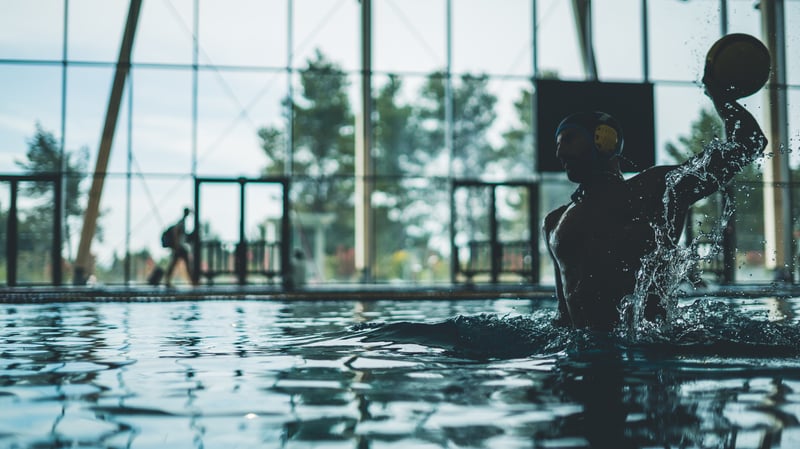
In previous posts we’ve explored the differences in the movement signatures of rotational athletes like MLB pitchers, and athlete who need to be stiffer and quicker like NFL lineman. The different needs of those two athletes are immediately apparent, and they both play land-based sports where Ground Reaction Force (GRF) is a governing factor. What if we looked at athletes who need to be rotationally powerful while not in contact with the ground, like outside hitters in volleyball? Would they still have the same Sparta signature as a pitcher? Better yet, what if we looked at athletes who never come in contact with the ground at all?
Waterpolo is the oldest team sport played in the modern Olympic era, dating back to the 1900 games in Paris. If you’ve never seen a game, imagine combining the physicality of rugby and the “man-up” power play and strategy of hockey in the water. Now you understand it is an extremely physically demanding sport, with players often swimming more than 2 miles per match, but as we’ll see the demands and strengths of the different positions can be very significant. One of our collegiate partners has a waterpolo team that routinely ends the season ranked among the top 5 teams in the nation. The coach and I were recently discussing the differences of some of his current players and analyzing their Sparta Signatures.

The signature on the left is from the best shooter on the team. He is routinely called upon to score the ball from 7-9 meters away from the goal and takes a significant amount of the teams’ outside shots, both during natural play and man-up situations. As you can see, he has a very rotational signature, much like we would see from a pitcher or quarterback. This neuromuscular consistency is seen even though he spends little to no time practicing ground based athletic movements. The signature on the right is from a player who plays “hole set” on the team. This position is like the center in basketball. The athlete plays a majority of the offensive position with his back to the goal and has to constantly fight with his defender to maintain position. Hole sets generally don’t play anywhere else in the pool, they are a very specialized position. Besides wrestling for position, the hole set needs to be able to make a very explosive move if the ball is passed to him, he never has much time with the ball before other defenders come crashing in. You can see from his Sparta Signature that he is much less rotational, and that EXPLODE is high, indicating that he is very good at maintaining tension, especially in his trunk, which is very important for not getting pushed around. Athletes with high EXPLODE t scores don’t need as much of a counter movement to generate force, which makes a lot of sense if you think about how difficult it would be to generate explosive force in the water (extra resistance).
Many technologies that evaluate athletes have a hard time translating into the water. As we work with more aquatic athletes we’re finding that force production seems to be universal, making the movement signature just as valid for for these athletes as other land-based sports.